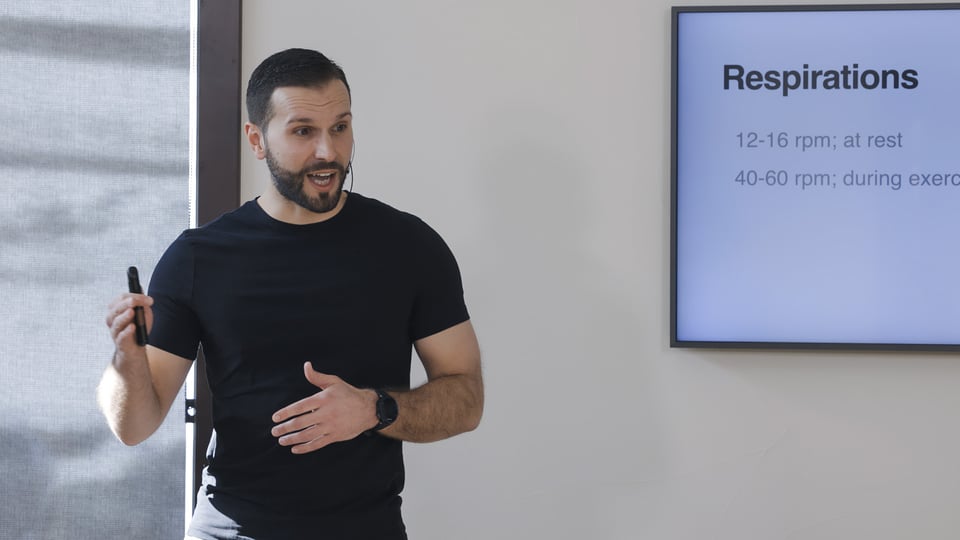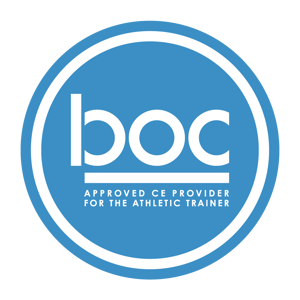A Fringe Perspective on Whole Person Health (CEU COURSE) with Joe LaVacca, PT, DPT, OCS
This course is the intersection of physical and mental health that you've been craving.

Description
Helping our patients and clients with their pain, sleep and mental health issues continues to be one of the biggest opportunities for health professionals today. Our current healthcare system is struggling to addressthe very essence of what it means to be human; we are unique. Personalized care is a struggle to provide in a system full of reference ranges and ‘normals’.
This course will take students on a journey to understand how we have arrived at our current definition of ‘health’ and how history has shaped how we view what it means to be ‘healthy’. Learners will be challengedto think outside the box on your current beliefs about physical and mental ‘health’ and how they define our‘internal world’. The course will explore the implications our ‘external world’ (our environment, relationships and beliefs) can have on our patients’ ability to heal.
A holistic ecosystem approach to health will be presented as a framework for understanding how our body,mind, space and beliefs shape our ‘health’. Students will be left with a new found hope in how you help patients and clients achieve more harmony in their lives; and improve their clinical outcomes.
Available Course Credits
| Alaska State PT & OT Board | 4.50 | ||
| Arizona State Board of Physical Therapy | 4.50 | ||
 |
BOC | 4.50 | |
 |
Colorado Physical Therapy License Board | 4.50 | |
| Connecticut Department of Public Health | 4.50 | ||
| Delaware Examining Board of Physical Therapists and Athletic Trainers | 4.50 | ||
| District Of Columbia Department of Health | 4.50 | ||
| Georgia State Board of Physical Therapy | 4.50 | ||
| Idaho Physical Therapy Licensure Board | 4.50 | ||
| Illinois Department of Professional Regulation | 4.50 | ||
| Indiana Physical Therapy Board | 4.50 | ||
| Iowa Board of Physical Therapy and Occupational Therapy | 4.50 | ||
| Kentucky Board of Physical Therapy | 4.50 | ||
| Maine Board of Physical Therapy | 4.50 | ||
| Massachusetts Board of Allied Health Professionals | 4.50 | ||
| Michigan Board of Physical Therapy | 4.50 | ||
| Minnesota Board of Physical Therapy | 4.50 | ||
| Mississippi State Board of Physical Therapy | 4.50 | ||
| Missouri Advisory Commission for Physical Therapists | 4.50 | ||
| Montana Board of Physical Therapy Examiners | 4.50 | ||
| Nebraska Department of Health and Human Services | 4.50 | ||
| New Mexico Physical Therapy Board | 4.50 | ||
| North Carolina Board of Physical Therapy Examiners | 4.50 | ||
| North Dakota Board of Physical Therapy | 4.50 | ||
| Office of Professional Regulation, Vermont Secretary of State | 4.50 | ||
| Oregon Board of Physical Therapy | 4.50 | ||
| Pennsylvania State Board of Physical Therapy | 4.50 | ||
| Physical Therapy Governing Board New Hampshire | 4.50 | ||
| South Carolina Board of Physical Therapy | 4.50 | ||
| South Dakota Physical Therapy License Board | 4.50 | ||
| State of Alabama Board of Physical Therapy | 4.50 | ||
| State of Rhode Island Department of Health | 4.50 | ||
| Tennessee Board of Physical Therapy | 4.50 | ||
| Utah Physical Therapy Licensing Board | 4.50 | ||
| Virginia Board of Physical Therapy | 4.50 | ||
| Washington State Board of Physical Therapy | 4.50 | ||
| Wisconsin Physical Therapy License Board | 4.50 | ||
| Wyoming Board of Physical Therapy | 4.50 |
Learning Objectives
1. Define what it means to be “healthy” and discuss the current ways our healthcare system looks at a patient’s ‘health’.
2. Illustrate the significance of pain, sleep and mental health disorders in America and the potentialcrisis we face if healthcare providers continue to treat them in an isolated fashion.
3. Discuss and interpret how the history of healthcare in America has shaped how our community views ‘health’ today.
4. Introduce an ecosystem approach to health to include a person’s body, mind, relationships, environment, and beliefs.
5. Define the Endocannabinoid system (ECS) and discuss its role as the body’s homeostatic regulator amongst multiple biological systems.
6. Define the task positive network (TPN) and default mode network (DMN) and discuss its role in anxiety, stress, and depression.
7. Discuss relationships, environment and community impact on health and how essential they are to our patients and clients’ overall well-being.
8. Explore the science of belief and its impact on healing.
9. Discuss practical approaches to improving the health of a person’s ecosystem by redefining ‘what is medicine’.
Course Procedure
- Enroll in the course.
- View the course content.
- Take the Quiz (if a CEU course)
- Complete Course Evaluation
- Print your certificate of completion.
Course Content
| A Fringe Perspective on Whole Person Health Course | Module |
Welcome and Introductions
Welcome & introduction of instructor and course participants
Overview and outline of the course
What are we doing here? (Ch 1)
Discussion on how to know if ourselves or our patients are healthy?
Overview of typical methods of ‘health’ analysis
Understand importance of assessing patients during everyday life
Who is Fringe? (Ch 2)
Discuss the term ‘fringe’ as it applies to healthcare professionals.
Discuss the value of working together with our patients/clients to understand and personalize their care.
Our Health (Ch 3)
Identify the economic impact of chronic pain on America.
Discuss the opioid crisis in America and lack of care available.
Illustrate the significance of sleep disorders in America and the long term risks associated with them.
Identify the mental illness crisis in America and the importance of natural and safe solutions for treating mental health.
Hour 1:00-2:00
Reframing our Problems (Ch 4)
Introduce the concept of pain as a tool for learning.
Understand how chronic or ‘unchecked’ inflammation results in increased pain.
Explain the correlation between balanced circadian rhythms and healthy sleep cycles.
Define allostasis and how an impaired allostatic response affects our physiology.
Understanding Health (Ch 5)
Define “health”and explore the current ways our healthcare system looks at a patient’s ‘health’.
A Brief History of Health in America (Ch 6)
Explore the timeline of healthcare in America and its advancements from 1700 - present.
Identify the impact of the Flexner Report on modern medicine.
Define Seyle’s General Adaptation Syndrome (1936).
Introduce the Biopsychosocial Model (1977).
Discuss complex systems theory and more ‘whole person’ approach to healthcare.
Hour 2:00-2:45
Fringe Health Ecosystem (Ch 7)
Discuss the differences between balance and harmony as it pertains to a person’s health.
Explore how health is strictly interconnected with our biological ecosystem.
Illustrate our responsibility for the biosphere we live in and how it relates to our health.
Define the concept of our inner world: our body and mind.
Define the concept of our outer world: our relationship, environment and our beliefs.
Fringe Health Ecosystem - Body (Ch 8)
Discuss the traditional body systems we examine.
Define the Endocannabinoid system (ECS), its relationship to our traditional body systems and its major role as our body’s homeostatic regulator.
Understand ECS receptors, their locations and their functions in our body.
Understand our body’s own endocannabinoids and their functions.
Discuss the ECS and its effect on inflammation, circadian rhythms, and allostasis.
Define how the ECS affects the limbic system, HPA axis, and the hormonal system.
Explore the effects of impaired allostasis on our overall health.
Define Clinical Endocannabinoid Deficiency.
Hour 2:45 - 4:00
Fringe Health Ecosystem - Mind (Ch 9)
Discuss the impact emotions have on learning, attention, focus, and memories.
Define dopamine and its effect on happiness.
Understand hedonia vs. eudaimonia.
Define the task positive network (TPN) and default mode network (DMN) and it’s role in anxiety, stress, and depression.
Explore the impact that the mind has on pain, stress, and sleep.
Understand how being deficient in sleep can affect our emotional responses.
Fringe Health Ecosystem - Space (Ch 10)
Discuss social baseline theory.
Define oxytocin - the social molecule.
Discuss the importance of movement and exercise in group settings.
Discuss family, marriage, and communities impact on health and how essential community is to our overall well-being.
Explore war, politics, and cultural impacts on our health.
Explore nature’s positive impact on health vs. negative impacts from modern culture.
Define the subconscious stimulus response pathway.
Discuss Western vs. Eastern medicine.
Discuss loneliness and its effect on cancer, heart disease, and respiratory problems.
Summarize scientific literature review on relationships/environment and health.
Hour 4:00 - 4:30:
Fringe Health Ecosystem - Belief (Ch 11)
Discuss consciousness as mankind's greatest achievement.
Explore ‘awe’ as a concept of straddling science and uncertainty.
Discuss the impact of belief on mortality.
Summarize scientific literature review on belief and health.
Fringe Ecosystem in Real Life (Ch 12)
Explore the Fringe Ecosystem as a model for understanding the pillars of our health - Body, mind, space, and belief.
Fringe State (Ch 13)
Compare the difference between proprioception vs. interoception
Explore ways to boost emotional intelligence
Discuss mindfulness and its positive effect on immune health, cortisol levels, inflammation, and blood pressure.
Define fringe factors as common sense medicine for improving our overall health. Ie. Breathing, movement, touch, plants, sleep, laughter, community.